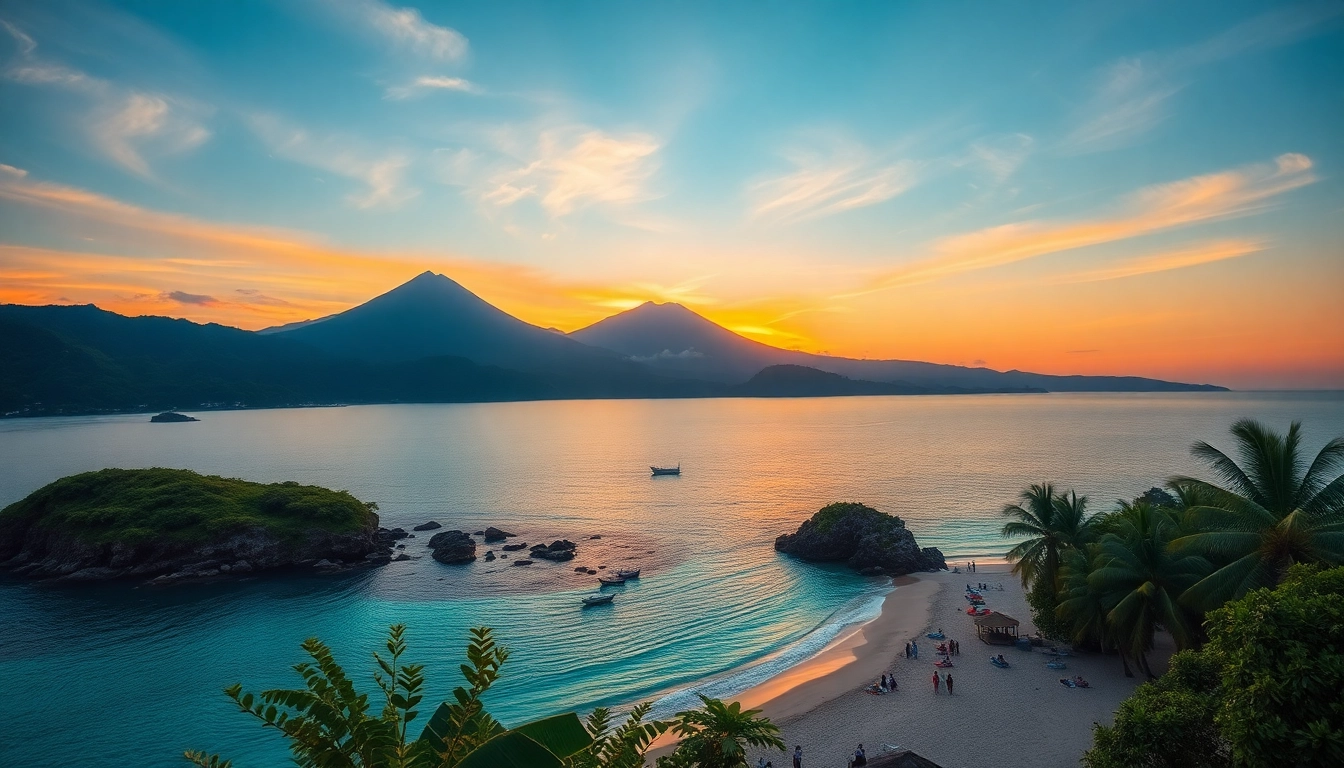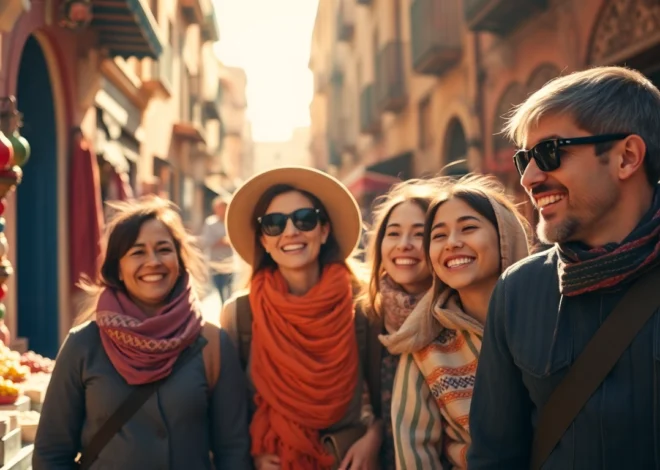
Discover Lombok: Top Natural Wonders and Cultural Destinations in Indonesia
Introduction to Lombok: Indonesia’s Hidden Paradise
Nestled in the heart of Indonesia’s vast archipelago, Lombok stands as a testament to natural beauty and rich cultural heritage. Often overshadowed by Bali’s global fame, Lombok offers travelers a unique blend of pristine beaches, towering volcanoes, and traditional villages that promise an authentic Indonesian experience. With its diverse landscapes and warm hospitality, Lombok is increasingly emerging as a premier travel destination. For those seeking an escape into nature, adventure, and culture, Lombok should be at the top of your list.
Stretching across approximately 4,725 square kilometers, this island is part of the Lesser Sunda Islands chain and is geographically separated from neighboring Bali by the Lombok Strait. The island’s strategic location and diverse geography have cultivated a unique ecosystem and cultural mosaic, making it an ideal destination for eco-tourists, adventure seekers, and cultural enthusiasts alike.
Geographical Overview of Lombok
Lombok’s geography is characterized by its rugged volcanic landscapes, lush rainforests, and turquoise waters. The island features two main mountain ranges, with the imposing Mount Rinjani rising to 3,726 meters above sea level, making it the second-highest volcano in Indonesia. The active volcano provides both a challenge for trekkers and an awe-inspiring natural monument.
The northern part of Lombok boasts its scenic beaches, coral reefs, and vibrant marine biodiversity, making it a diver’s paradise. Conversely, the southern coast is renowned for its surf breaks, white sandy beaches, and laid-back atmosphere. The central region is inhabited by rural communities that preserve traditional customs and artisanal crafts.
Several smaller islands surround Lombok, including the Gili Islands—Gili Trawangan, Gili Meno, and Gili Air—each offering their own charm and attractions. These islands are renowned for world-class snorkeling, diving, and vibrant nightlife, establishing Lombok as a versatile island destination.
Historical and Cultural Background
Lombok’s history is deeply intertwined with the broader Indonesian narrative of kingdoms, invasions, and cultural syncretism. Traditionally, the island was part of the ancient Balinese kingdom and later became predominantly influenced by Islam as the indigenous Sasak people adopted this faith centuries ago. Despite external influences, Lombok has preserved its cultural identity through traditional dances, music, and crafts.
The Sasak people are the island’s largest ethnic group, known for their intricate weaving, wood carvings, and unique religious practices. Their daily life is woven with rituals and festivals that celebrate agriculture, spiritual beliefs, and ancestral spirits. Notable cultural sites include traditional villages such as Sade and Sembalun, where visitors can witness age-old customs and architecture.
Historical relics, ancient princely palaces, and religious sites like Pura Lingsar reflect Lombok’s rich heritage. These sites offer insight into the island’s historical resilience and cultural evolution, making Lombok not just a natural wonder, but a living museum of Indonesian history.
Why Lombok Stands Out as a Travel Destination
Unlike more commercialized destinations, Lombok offers an authentic Indonesian experience amidst unspoiled nature and untouched traditions. Its appeal lies in its diversity—delivering pristine beaches, adrenaline-inducing hikes, and cultural immersion all in one place.
One of the most compelling reasons to visit Lombok is its less crowded environment, which provides a more peaceful and intimate travel experience. The island’s natural attractions like Mount Rinjani and Sekotong beaches are less developed compared to Bali, fostering a sense of adventure and discovery. Furthermore, the local communities actively promote eco-tourism and sustainable practices, aligning with global trends towards responsible travel.
Moreover, Lombok’s strategic location makes it a gateway to exploring other parts of Indonesia, including the nearby Gili Islands and Sumbawa. Its affordability and friendly local population heighten its allure, offering a genuinely warm Indonesian welcome.
Must-See Attractions in Lombok
Magnificent Beaches and Islands
Lombok’s beaches are renowned for their pristine white sands, crystal-clear waters, and perfect surf conditions. Pantai Tanjung Aan, with its fine white sand and scenic coastline, is ideal for sunbathing and beach sports. Nearby, Kuta Beach offers excellent surf for beginners and pros alike, with surf schools and laid-back eateries lining the shore.
The Gili Islands—Gili Trawangan, Gili Meno, and Gili Air—are among the most popular destinations for snorkeling, diving, and nightlife. Gili Trawangan is famous for its vibrant party scene, while Meno offers a tranquil escape and Air boasts beautiful coral reefs and marine life, making the Gilis a perfect extension for island-hopping adventures.
Other noteworthy beaches include Senggigi Beach on the west coast, known for its romantic sunset views, and Selong Belanak, a favorite among surfers and families due to its gentle waves.
Active Volcanoes and Mountain Adventures
Mount Rinjani stands as a towering symbol of Lombok’s rugged landscape. For adventure enthusiasts, trekking to Rinjani’s summit is an unforgettable journey, often taking two or three days. The trek offers diverse scenery—from lush forests and volcanic craters to panoramic vistas of the surrounding islands.
Guided expeditions typically start from Sembalun Lawang or Senaru villages, providing opportunities for cultural exchange with local Sasak guides. The crater lake, Segara Anak, is a highlight of the trek, renowned for its turquoise waters amidst volcanic terrain.
Beyond Rinjani, Mount Tambora in nearby Sumbawa provides another volcanic challenge and historical significance, being the site of the 1815 eruption that caused global climatic anomalies. These mountain adventures combine physical challenge with views of Indonesia’s geological marvels.
Cultural Sites and Traditional Villages
Immersing yourself in Lombok’s rich culture involves visiting traditional Sasak villages such as Sade and Ende. These villages showcase authentic weaving, pottery, and traditional housing made from bamboo and thatch.
Pura Lingsar, a significant religious site, embodies religious harmony, hosting both Hindu and Muslim worshipers. Attending local festivals such as Bau Nyale, where locals catch sea worms believed to be incarnations of Princess Mandalika, provides an extraordinary cultural experience.
Markets like Mataram’s Pasar Cakranegara offer local crafts, spices, and textiles, allowing visitors to engage directly with artisans and understand the local economy and customs.
Experiencing Lombok’s Nature and Wildlife
Unforgettable Waterfalls and Natural Parks
Lombok is home to stunning waterfalls such as Sendang Gile and Tiu Kelep in the northern region near Mount Rinjani. These cascades, nestled within lush jungle landscapes, provide cool retreats and excellent photo opportunities. Guided hikes to these waterfalls are popular among eco-tourists.
For wildlife and nature lovers, the Gunung Rinjani National Park protects diverse flora and fauna, including rare bird species, monkeys, and orchids. Birdwatching tours and jungle treks are available for those wanting to explore the island’s biodiversity.
Marine Life and Diving Spots
The waters surrounding Lombok teem with vibrant marine ecosystems. Renowned diving sites include Sekotong, Gili Trawangan, and the three Gili Islands, each offering coral reefs, manta rays, sharks, and abundant tropical fish. The underwater visibility often exceeds 30 meters, attracting divers and snorkelers worldwide.
Conservation efforts have been implemented to preserve these fragile ecosystems, including marine protected areas and community-based tourism initiatives that promote sustainable diving practices.
Eco-Tourism and Conservation Efforts
Sustainable tourism is gaining momentum in Lombok, with initiatives focused on conserving its natural beauty and cultural heritage. Community-led programs support local fishermen, farmers, and artisans, ensuring economic benefits flow directly into local communities.
Eco-lodges and responsible travel operators emphasize low-impact tourism, waste management, and environmental education, making Lombok a model for eco-conscious destinations in Indonesia.
Practical Travel Tips for Visiting Lombok
Best Time to Travel and Climate
The optimal period to visit Lombok is during the dry season, from May to September, when the weather is sunny, sea conditions are ideal for water activities, and the landscape is lush. The rainy season, from November to April, brings frequent showers and rough seas, which may disrupt travel plans.
Temperatures hover around 27°C to 32°C, making it suitable for outdoor adventures year-round, but travelers should prepare for the occasional tropical rain and high humidity.
Local Cuisine and Cultural Etiquette
Lombok’s cuisine is rich and diverse, characterized by spicy rendang, fresh seafood, and traditional Sasak dishes like Plecing Kangkung—spicy water spinach salad—and Ayam Taliwang, a fiery grilled chicken. Sampling local food at warungs (small eateries) provides an authentic taste of Lombok’s culinary heritage.
Respect for local customs is vital. Dress modestly when visiting religious sites, remove shoes before entering sacred spaces, and engage politely with local residents.
Getting Around and Accommodation Options
Transportation options include renting scooters, which are the most flexible way to explore rural and coastal areas, and hiring private drivers for day trips. Public transportation is limited but available in main towns.
Accommodation varies from luxury resorts in Senggigi and Kuta to affordable hostels, guesthouses, and eco-lodges. For a more immersive experience, staying in traditional villages or homestays can enrich your cultural understanding.
Maximizing Your Lombok Experience
Sample Itineraries for Different Travelers
- Adventurer’s Route: 3-5 days exploring Mount Rinjani, waterfalls, and beach surfing.
- Cultural Explorer: 4-6 days visiting traditional villages, markets, and cultural festivals.
- Relaxation and Luxury: 5+ days at seaside resorts, spa treatments, and island-hopping in the Gili Islands.
Tailoring your itinerary based on interests ensures a meaningful and memorable trip. Local tour operators can assist in customizing your plans and providing expert guides.
Connecting with Local Communities
Participating in community-led tourism activities helps sustain local livelihoods. Volunteering opportunities, craft workshops, and cultural exchanges foster authentic connections and contribute to responsible tourism.
Respect for traditions, supporting local businesses, and minimizing environmental impact are crucial practices when engaging with indigenous communities.
Safety Tips and Responsible Tourism
Always check travel advisories and health recommendations before your trip. Use reputable guides and operators, keep personal belongings secure, and adhere to local laws and customs. Respect natural sites by not littering and avoiding the use of single-use plastics.
Practicing responsible tourism ensures that Lombok remains pristine for future visitors and benefits its local population economically and culturally.


